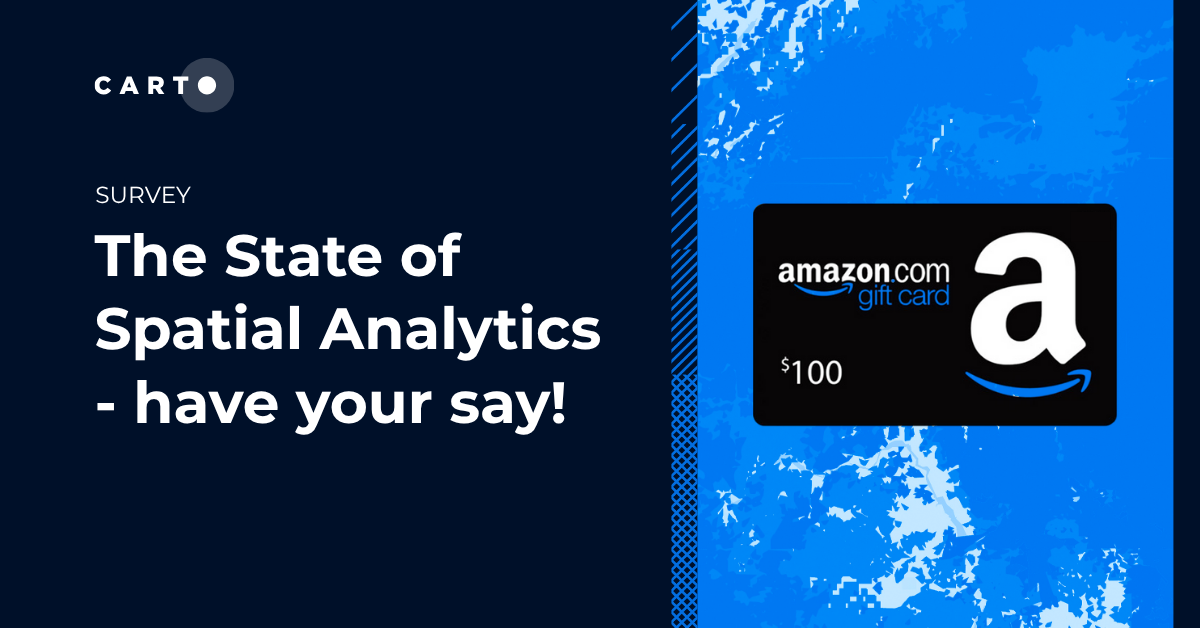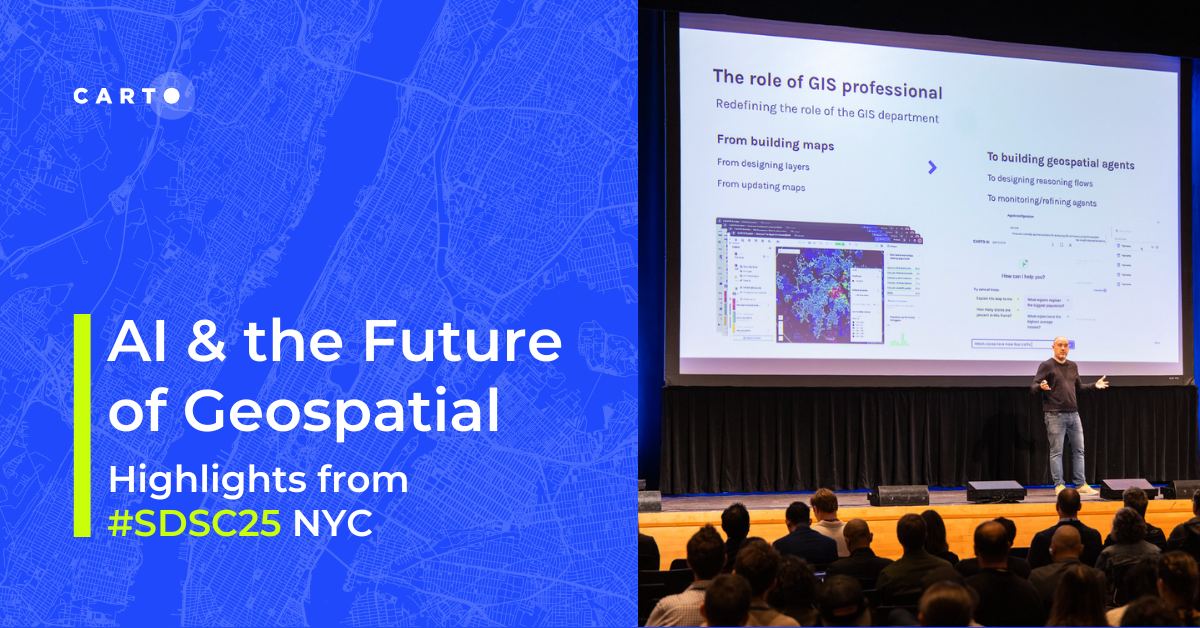What's New in CARTO - Q3 2023

As we approach the 2nd anniversary since the release of our latest cloud-native platform, it’s a great opportunity for us to look back and reflect on how our product has evolved, and how we have leveraged our users’ direct feedback to enable unrivaled cloud-native spatial analytics and data visualization capabilities at scale.
At CARTO, we are focused on providing you with the most advanced and complete geospatial platform that is built for the modern data stack. We work closely with our enterprise customers so they can modernize their web maps, geospatial analysis tools and location-driven products to truly benefit from the scalability, flexibility and cost-efficiency gains that cloud technologies provide. From data analysts looking to build interactive dashboards that exploit and report on location-based insights, developer teams looking for a stack to accelerate the build of geospatial applications, to data scientists creating analysis workflows and models that utilize large volumes of spatial data; CARTO is the next generation geospatial platform that lets you extract the most value out of your spatial data, natively within Google BigQuery, Snowflake, Redshift or Databricks.
This past quarter we have launched a number of important new features across all major components of the platform. From Builder, our drag and drop tool to build and publish interactive maps; to Workflows, our no-code tool to design data transformation and analysis pipelines. We have also continued to enhance our support for data access policies and authentication methods in large enterprise environments, and further enhanced our toolkit for developers looking to build performant spatial apps.
In this post we cover some of the major product milestones achieved during the summer months of 2023, so you can share in the exciting momentum we have whilst building out our platform. Let’s dive in and take a look at the main developments during Q3 2023! Also, remember to regularly check out our What’s New page to keep up to date with our most recent releases.
We have recently upgraded the Time Series widget in Builder to further boost user experience when analyzing spatio-temporal data. These enhancements bring a new level of customization to data exploration, offering:
- Increased temporal precision: Our upgraded Time Series widget empowers users with precise control over temporal data aggregation. Users can now extract insights using custom time intervals and enjoy greater granularity, resulting in more accurate analyses.
- Analysis of multiple time series: Giving users the ability to analyze multiple time series simultaneously within the widget, enabling more powerful concurrent analysis over time.

For advanced use-cases in Builder, we have added support for “numeric” SQL Parameters, expanding our portfolio of supported parameter types. Leveraging the Numeric SQL parameter, users can retrieve a single or paired numeric value from a control UI to update the underlying data sources added to the Builder map. It’s an excellent option for those looking to filter data by specific numeric ranges or adjust analytical outputs based on numerical inputs.
You can learn more about how to set up and use SQL Parameters in Builder here.

We have released support for Markdown syntax in Builder map descriptions and widget notes. With these richer descriptions, you’re not just adding text; you’re crafting a more engaging and informative map experience. The support for Markdown syntax allows you to include various text formats, headers, links, images, and even bullet-point lists, elevating the user’s understanding and interaction with your map. To learn more about how to add and style your map descriptions, read here.
This quarter we have made Data Observatory subscriptions available as data sources in Workflows. This enhancement makes it easier for users to incorporate, process and analyze the data from their subscriptions in workflows seamlessly using our no-code model builder.
Additionally, we’ve made a new set of data enrichment components available in Workflows that can be used to enrich your own data with 3rd party sources.
Additionally, we have released new components for advanced Statistics and for Retail Analytics, Geographically Weighted Regression and Commercial Hotspots respectively, which are initially supported in Google BigQuery,
These additions to Workflows will make it a lot easier to enrich data and access advanced statistical capabilities in CARTO, integrating these complex processes as just another simple step in a workflow.
With the release of the viewer credentials mode when creating shared BigQuery connections, we have added several benefits for organizations using this data warehouse:
- Now, users can collaborate in maps using a shared BigQuery connection through the OAuth authentication option (i.e. “Sign in with Google”).
- Instead of creating one connection per user, you can create just one connection and share it with different users, reducing the ongoing management workload.
- By requiring viewer credentials in a Builder map, you can leverage row-level security and other data access policies already configured in your data warehouse.

Development teams building spatial applications with the CARTO platform can now use their existing Single Sign-On (SSO) integrations enabled in their account to authenticate users and offer direct access to applications.
With the right setup, these applications will now be able to manage existing users and also first-time users coming from the SSO Identity Provider (IdP) as a seamless experience with no extra steps required (i.e. Just-in-time provisioning).
This quarter we have also added the possibility to control the visibility of your developed applications in CARTO through our usual sharing options (private, shared with the organization, and public), including the ability to share an application only with specific groups of users. You will find more information for these use cases and other details in the Managing applications section in our documentation.

We have recently added a new area focused on CARTO Self-hosted deployments in our Product Documentation. This section includes a detailed explanation of our deployment options, architecture diagrams for all clouds (to clarify how our self hosted can be integrated into your own infrastructure), deployment requirements and step-by-step installation guides.

We are really excited by this wave of enhancements to the CARTO platform and would like to thank our customers and partners for guiding us on this journey; and remember you can stay up to date on our most recent product releases by regularly checking our What’s New section.
If you would like to find out more about the enhancements we have recently released and see the CARTO platform in action, why not sign up to our What’s New Product Update webinar, taking place on Wednesday 11th October.
Would you like to try out these features for yourself? Sign up for our free 14-day trial!
















.png)
